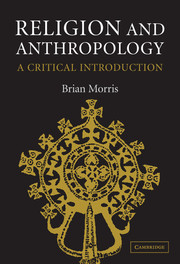Book contents
- Frontmatter
- Contents
- Preface
- Introduction
- 1 Shamanism
- 2 Buddhism and Spirit-Cults
- 3 Islam and Popular Religion
- 4 Hinduism and New Religious Movements
- 5 Christianity and Religion in Africa
- 6 African-American Religions
- 7 Religions in Melanesia
- 8 Neopaganism and the New Age Movement
- Conclusions
- References
- Index
6 - African-American Religions
Published online by Cambridge University Press: 29 March 2011
- Frontmatter
- Contents
- Preface
- Introduction
- 1 Shamanism
- 2 Buddhism and Spirit-Cults
- 3 Islam and Popular Religion
- 4 Hinduism and New Religious Movements
- 5 Christianity and Religion in Africa
- 6 African-American Religions
- 7 Religions in Melanesia
- 8 Neopaganism and the New Age Movement
- Conclusions
- References
- Index
Summary
PROLOGUE
The slave-ships carried not only men, women and children, but also their gods, beliefs, and traditional folklore.
So wrote the pioneering French Sociologist, Roger Bastide (1971, 23).When Columbus reached the Caribbean Islands in 1492, the American continent was populated by human communities whose social institutions and cultural patterns showed a remarkable diversity ranging from nomadic foragers like the Shoshoni and Paiute to complex theocratic states and civilizations – in its original sense – like the Aztec, Maya, and Inca (Farb 1969). The pattern of cultures that pre-existed the penetration and colonization of the American continent by European peoples, along with the developing market economy, to a large degree structured the subsequent division of the continent into what has been described as the ‘three Americas’ (Harris 1964). The temperate regions of the Americas, peopled largely by hunter–gatherers or shifting cultivators, were colonized by Europeans and now constitute ‘white’ America. In these regions, in countries such as the United States, Chile, and Argentina, the Native American population was largely eliminated through disease, forced labour, and genocide, and the majority of the population are now of European descent. In parts of Central and South America, however, the locus of the theocratic states of the Incas and Aztecs, the Native American population was high, and the Spanish and Portuguese colonizers, having conquered the region, simply supplanted the traditional elite and proceeded to rule these areas as imperial domains.
- Type
- Chapter
- Information
- Religion and AnthropologyA Critical Introduction, pp. 188 - 231Publisher: Cambridge University PressPrint publication year: 2005



